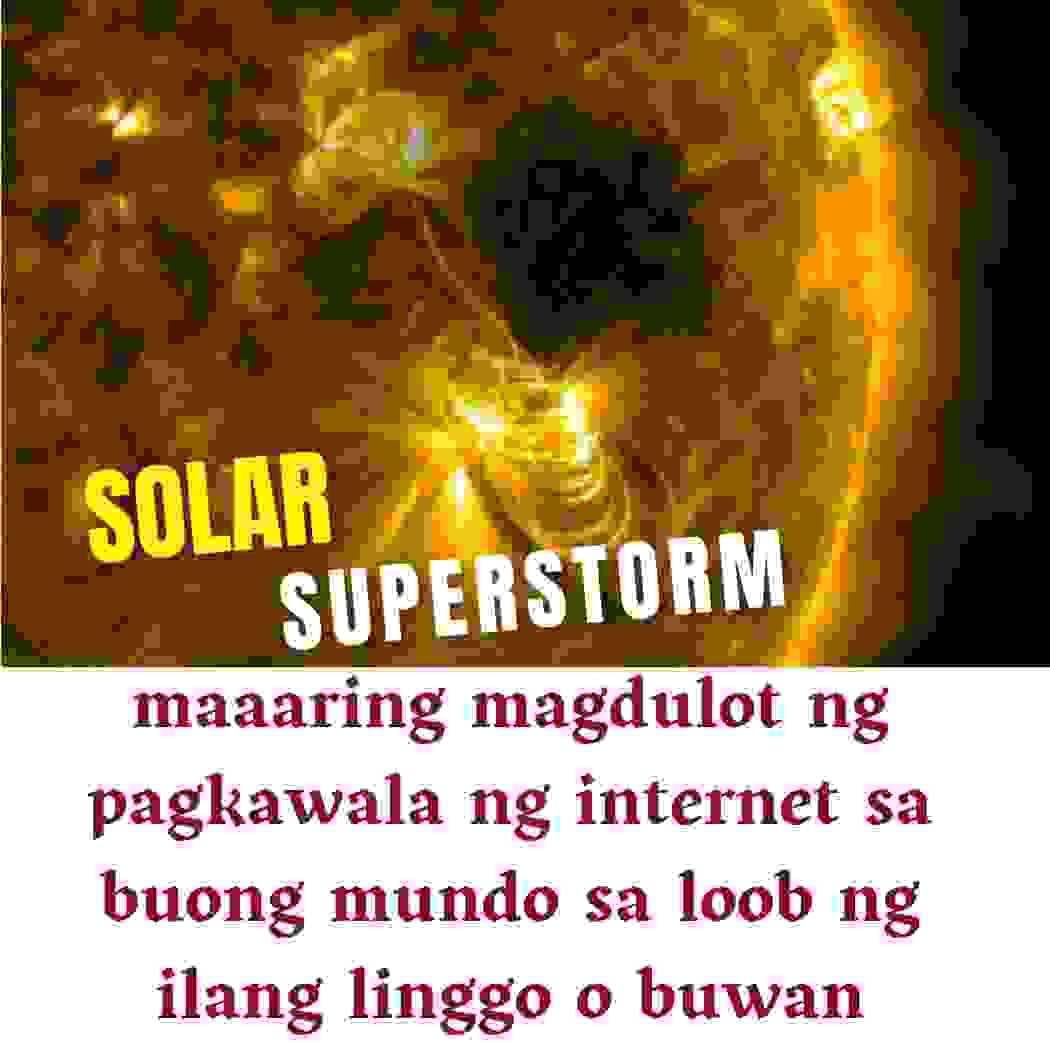Solar superstorm could 'wipe out the internet' for weeks or months
In recent news, a team in the United States is creating an early warning system for potentially devastating solar activity that could wreak havoc on our critical technology infrastructure. This comes as the world grapples with the potential consequences of a solar "superstorm" that has been making headlines.
Several social media posts and even a Fox News art card with the alarming headline "Solar superstorm could 'wipe out the internet' for weeks or months, scientist says" have raised concerns about the possibility of an internet apocalypse caused by solar activity. TV5's "Frontline Tonight" also reported on this issue, emphasizing the need for scientists to develop an early warning system to mitigate the impact of increased solar activity.
On November 8, Fox Weather featured an interview with Peter Becker, a professor in George Mason University's Department of Physics and Astronomy, who is leading the development of this early warning system. Becker's team is collaborating with the United States Department of Navy. It has secured $13.6 million in federal grants to study and better understand the heightened solar activity that could disrupt all electronic communications on Earth, including satellite communications.
Becker acknowledged the growing coverage of potential "internet apocalypse" scenarios in US-based broadsheets, attributing the discussions to increased solar flares. He also shed light on coronal mass ejections (CMEs), describing them as "cannon shots" in increased solar activity. CMEs are massive explosions of plasma and magnetic fields from the Sun's corona, which, upon impact, can distort Earth's magnetic field.
However, Becker pointed out that we can predict when CMEs are heading towards Earth, providing us with approximately 18 to 24 hours of warning before their particles reach our planet and interfere with Earth's magnetic field. This early warning system is a crucial part of their efforts to safeguard critical technology.
Becker's interview coincides with the approach of a "solar maximum" phase, a peak in the Sun's 11-year solar cycle, characterized by significantly increased solar activity, including more solar flares and CMEs. According to NASA, this heightened solar activity is expected to occur between January and October 2024, as stated by the US National Oceanic and Atmospheric Administration (NOAA) in October.
To illustrate the potential consequences of solar activity on technology, Becker cited historical events such as the Carrington Event of 1859 and the Halloween solar storms in 2003. The Carrington Event, in particular, wiped out the telegraph system of that era, which was the equivalent of their internet at the time. Telegraph lines reportedly emitted sparks, and some operators were rumored to have been electrocuted. The telegraph system remained down for several weeks.
Becker emphasized that the modern internet infrastructure, with its intricate cables and fibers, is not built to withstand an event of such magnitude. He estimated that the US economy alone could suffer daily losses of $10 to 20 billion if such an event were to occur today.
With the early warning system in place, Becker suggests that mitigation measures, such as temporarily switching off critical infrastructure, can be implemented. However, he also raises the possibility of "hardening" the infrastructure in the long term to withstand solar disturbances better.
In a related development, NASA has been collaborating with an international group of researchers at the Frontier Development Lab to develop a computer model that combines artificial intelligence (AI) with NASA satellite data to predict impending solar storms 30 minutes in advance. This innovative approach aims to enhance our ability to prepare for and mitigate the impact of solar storms.
NASA highlights past solar storms, such as the one in 1989, which resulted in a 12-hour blackout in Quebec, Canada, affecting schools and businesses. The agency warns that a modern-day Carrington Event would have even more severe consequences, including widespread electrical disruptions, persistent blackouts, and interruptions to global communications, potentially crippling economies and endangering the safety and livelihoods of people worldwide.
As we approach the next "solar maximum," the risk of geomagnetic storms and their devastating effects on our society is increasing. The National Aeronautics and Space Administration (NASA) emphasizes the need for preparedness and vigilance in the face of these space weather hazards.
Mark Miesch, solar cycle lead at NOAA's Space Weather Prediction Center, highlights that such phenomena can interfere with the electrical grid, degrade GPS signals, increase orbital drag on satellites, and pose radiation hazards to airline crews and astronauts. More robust solar cycles produce more intense solar storms, posing a more significant threat to critical technologies and services.










No comments
Post a Comment